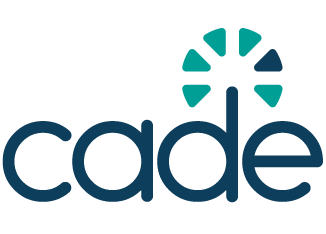Child safety online
Why child online safety matters
Children are among the most active internet users, yet they are also the most vulnerable. The online world offers opportunities for education, creativity, and connection but also exposes children to risks such as cyberbullying, exploitation, and harmful content. Protecting children online is not just about technology – it is about safeguarding their fundamental rights and enabling their full participation in the digital age.
For civil society, advocating for child safety online is essential to ensure that digital environments are inclusive, secure, and supportive of children’s development.
Key challenges in child safety online
Exposure to harmful content
Children can encounter a wide range of inappropriate content, such as violent, hateful, or sexually explicit material, while navigating the internet. The psychological effects of such exposure can be severe, affecting children’s emotional well-being and cognitive development. Advances in content moderation and parental control tools are essential, but they must be balanced with children’s rights to explore and learn online.
Online exploitation and abuse
The anonymity of the internet has facilitated alarming forms of exploitation, including grooming, trafficking, and the dissemination of child sexual abuse material (CSAM). Technologies such as encryption, while critical for privacy, can also be misused to conceal such crimes. International cooperation, robust reporting mechanisms, and proactive monitoring are essential to combat these threats effectively.
Cyberbullying
Online platforms have amplified bullying to a pervasive scale, allowing harmful behaviours to follow children into their homes. The effects can include emotional distress, academic struggles, and even tragic outcomes like suicide. Tackling this issue requires comprehensive anti-bullying policies, accessible support systems, and awareness campaigns targeting children, parents, and educators.
Digital literacy gaps
Children often lack the skills needed to recognise online risks and respond appropriately. Limited awareness leaves them vulnerable to scams, exploitation, and misinformation. Equipping children with digital literacy through school curricula and community initiatives is key to fostering responsible and informed online behaviour.
Data privacy violations
Children’s data is frequently collected by companies through apps, games, and social media, often without adequate safeguards or informed consent. Such data can be exploited for targeted advertising, profiling, or even sold to third parties. Strengthening child-specific data protection regulations and ensuring transparency in data collection practices are critical.
The policy dimensions of child safety online
Human rights
Protecting children in digital spaces aligns with their rights under the UN Convention on the Rights of the Child (CRC), including the right to safety, privacy, and freedom from exploitation. Effective policies must prioritise these rights while enabling children to benefit from the digital environment.
Digital equity
Safe and inclusive digital access is vital to bridging educational and social divides. Children in marginalised communities face heightened risks due to limited parental supervision, fewer safeguards, and inadequate access to resources. Policymakers and civil society should focus on reducing these inequities through targeted interventions.
Technology and innovation
Emerging technologies, such as AI, play a growing role in filtering harmful content and identifying online threats. However, reliance on automated systems raises concerns about over-censorship, false positives, and the potential infringement of children’s rights. Stakeholders must ensure that technological solutions are ethical, transparent, and rights-respecting.
Collaboration across sectors
A safer digital environment requires coordinated efforts among governments, the private sector, and civil society. This includes developing codes of conduct for tech companies, implementing global frameworks like the WePROTECT Model National Response, and fostering cross-sector partnerships to address gaps in enforcement and education.
Forums where child safety online is addressed
Civil society can engage with key organisations and initiatives to shape policies on child safety.
The UN Committee on the Rights of the Child and UNICEF engage with issues related to child safety in digital environments, advocating for policies and practices that safeguard children’s rights online. UNICEF also promotes the development of digital tools and platforms designed with children’s needs and interests in mind.
The International Telecommunication Union (ITU) contributes to global efforts to enhance child online safety through its Child Online Protection (COP) Initiative, which offers guidance for national and international policies. ITU supports awareness-raising activities, capacity building for stakeholders, and the integration of child safety into national ICT strategies. It also collaborates with partners to develop resources and frameworks to address risks, such as digital literacy tools and mechanisms to identify and mitigate online harms.
The WePROTECT Global Alliance focuses on addressing online child sexual exploitation by fostering collaboration across stakeholders, creating tools, and supporting legal and technical frameworks.
Regarding the private sector, initiatives such as the Tech Coalition and partnerships with technology companies and social media platforms work to ensure compliance with child protection policies. These efforts aim to enhance digital safety through content moderation practices and age-appropriate online tools.


